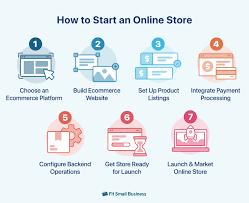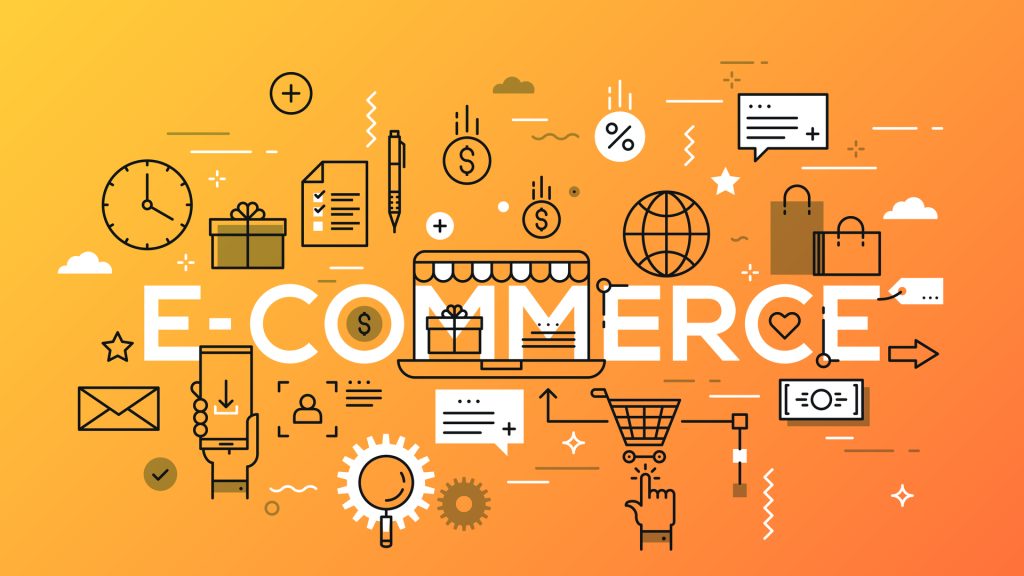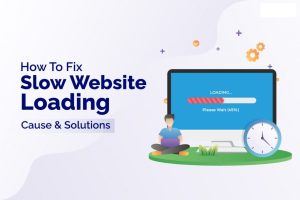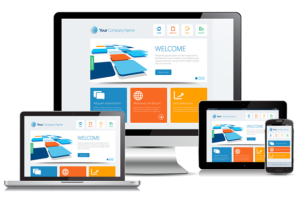Outline
| Heading | Subheading |
|---|---|
| Introduction | The rise of e-commerce in 2024 and why starting an online store matters |
| Understanding the E-commerce Landscape in 2024 | Changes, trends, and opportunities in the current e-commerce market |
| How to Start an Online Store in 2024 | Why starting an online store is still a profitable venture |
| Defining Your Niche | How to choose a niche for your online store |
| Researching Your Target Audience | Understanding your ideal customers |
| Identifying Product Opportunities | Finding profitable products for your e-commerce store |
| Selecting an E-commerce Platform | Choosing the right platform: Shopify, WooCommerce, Magento, and others |
| Building Your Online Store | Step-by-step guide to setting up your e-commerce store |
| Crafting a User-Friendly Store Design | Importance of UX/UI for e-commerce success |
| Optimizing for Mobile Shoppers | Why mobile optimization is essential in 2024 |
| Securing Your Online Store | How to ensure the security of customer data and transactions |
| Creating a Strong Brand Identity for Your Store | Why branding is crucial for e-commerce success |
| Designing a Logo and Visuals | Tips for creating an effective logo and visual brand elements |
| Writing Compelling Product Descriptions | How to craft product descriptions that sell |
| Pricing Strategies for Profitability | Setting competitive prices while maintaining profit margins |
| Understanding Shipping and Fulfillment | Shipping options and fulfillment strategies |
| Partnering with Reliable Suppliers | Finding trustworthy suppliers for your products |
| SEO for Online Stores in 2024 | How to optimize your e-commerce site for search engines |
| Keyword Research for E-commerce | Finding the right keywords to rank your store pages |
| Creating High-Quality Content | Importance of content marketing for e-commerce stores |
| Building Backlinks to Your Store | Link-building strategies to increase your online store’s visibility |
| Social Media Marketing for E-commerce | How to use social media to drive traffic to your online store |
| Running Paid Advertising Campaigns | Utilizing Google Ads, Facebook Ads, and Instagram Ads to boost sales |
| Leveraging Influencer Marketing | Partnering with influencers to promote your products |
| Email Marketing Strategies | Building and nurturing an email list to increase sales |
| Personalization and Customer Experience | How to offer personalized shopping experiences |
| Handling Customer Service Efficiently | Best practices for excellent e-commerce customer service |
| Tracking Performance with Analytics | Key metrics and tools for monitoring your store’s performance |
| Preparing for Seasonal Sales | How to optimize your store for Black Friday, holidays, and other events |
| Scaling Your E-commerce Business | Tips for growing your store beyond the initial stages |
| Common Mistakes to Avoid | Pitfalls that new online store owners should watch out for |
| Conclusion | Summarizing the key steps and encouraging readers to take action |
How to Start an Online Store in 2024: Step-by-Step Guide for Success
The e-commerce revolution has accelerated in the past few years, and by 2024, online stores have become essential for entrepreneurs wanting to reach global markets. Whether you’re a novice or a seasoned business owner, understanding how to start an online store in 2024 can set the stage for substantial success. This guide will walk you through each step to ensure you launch with the best strategies and tools.
Understanding the E-commerce Landscape in 2024
The e-commerce industry has evolved tremendously since its early days. In 2024, trends like mobile shopping, personalization, and social commerce dominate the market. To succeed, it’s crucial to understand these trends and how they can benefit your business.
E-commerce sales are expected to account for over 20% of global retail sales this year. Factors like convenience, variety, and technological advancements such as augmented reality (AR) for product previews have made online shopping the norm. Platforms like TikTok, Instagram, and Facebook are also driving sales through shoppable content, where customers can purchase directly from social media.
Another significant shift is the growing demand for sustainable and ethically sourced products. Consumers, especially millennials and Gen Z, expect businesses to reflect their values in product offerings. This has opened doors for eco-friendly brands and companies focused on corporate social responsibility.

How to Start an Online Store in 2024
Given the steady growth of e-commerce, starting an online store in 2024 presents a lucrative opportunity. Despite competition, new tools, platforms, and strategies make it easier than ever for entrepreneurs to launch successful online businesses.
The first step is to lay out a solid foundation for your store. This involves choosing your business model, such as dropshipping, wholesaling, or selling digital products. From there, it’s all about building a strong brand identity, selecting the right products, and marketing effectively.

Defining Your Niche
Your niche is the cornerstone of your e-commerce business. It’s the specific area or category your store will focus on, and defining it well will help you target a focused audience, create relevant products, and reduce competition.
Start by identifying your interests, strengths, and market gaps. Think about areas where you can offer something unique or where demand is growing. For instance, if you’re passionate about fitness, you might explore fitness tech accessories or eco-friendly workout gear. Research competitors to see if there’s space for you to introduce a fresh angle or more specialized products.
By narrowing your focus, you can become an expert in your chosen field, which builds trust with your target audience. This expertise will also help you stand out in a crowded market and connect more authentically with potential customers.

Researching Your Target Audience
Understanding your target audience is key to building a successful online store. When you know who your customers are, you can tailor your products, marketing messages, and user experience to meet their needs.
To get started, create customer personas—fictional representations of your ideal buyers. These should include demographic information like age, gender, location, and income level, as well as psychographic data such as their interests, values, and shopping behaviors. For example, a customer buying eco-friendly skincare products might value sustainability, organic ingredients, and cruelty-free certifications.
Use tools like Google Analytics, social media insights, and customer surveys to gather data about your audience. This research will guide every decision you make, from product selection to website design and marketing campaigns.
Identifying Product Opportunities
Once you’ve defined your niche and target audience, it’s time to choose the right products for your online store. Your products should not only align with your niche but also address the needs or desires of your audience.
There are various ways to source products, including creating your own, working with manufacturers, or using dropshipping services. If you’re developing your products, ensure they meet a unique need or offer a solution to a problem. Alternatively, if you opt for dropshipping, focus on finding reliable suppliers who offer high-quality products and reasonable shipping times.
Look for trending items by monitoring platforms like Google Trends, Amazon, or even social media. In 2024, categories such as sustainable products, personalized gifts, and home office equipment are seeing strong demand.
Selecting an E-commerce Platform

Choosing the right e-commerce platform is one of the most critical decisions you’ll make when starting an online store. There are several popular platforms available, each with unique features, benefits, and limitations.
Shopify is a favorite among beginners due to its user-friendly interface, extensive app ecosystem, and customizable templates. It handles everything from hosting to payment processing, making it an all-in-one solution for online sellers.
WooCommerce, on the other hand, is a plugin for WordPress, offering complete flexibility for those with some technical know-how. It’s an open-source platform, meaning you have control over every aspect of your store’s design and functionality, but you may need to manage hosting and security yourself.
Other platforms like BigCommerce, Magento, and Squarespace provide a range of options depending on your budget, technical expertise, and scalability needs. When selecting a platform, think about your current and future business goals, whether you need certain integrations or features, and how easily you can grow with the platform.
Building Your Online Store
With your platform chosen, it’s time to build your store. The layout and design should reflect your brand, make navigation easy, and provide a seamless shopping experience. Customers should find it easy to explore your site and locate products.
Begin by selecting a template or theme that aligns with your brand’s identity. Most platforms provide customizable templates, which you can modify to match your color scheme, logo, and overall aesthetic. Ensure your homepage highlights key products, promotions, or information about your business.
For product pages, include high-quality images, thorough descriptions, and customer reviews where possible. Remember, the more information you provide, the easier it is for customers to make informed decisions.
Crafting a User-Friendly Store Design
User experience (UX) is vital for e-commerce success. A well-designed store not only looks good but also functions smoothly, offering customers a hassle-free shopping experience.
Use a clean, uncluttered design and ensure your website loads quickly—customers tend to abandon slow websites. Implement intuitive navigation with categories and filters that allow customers to browse easily. Ensure call-to-action (CTA) buttons, like “Add to Cart” or “Buy Now,” are prominent and strategically placed.
Don’t forget to create a smooth checkout process. The fewer steps it takes for customers to complete a purchase, the better. Include multiple payment options and a guest checkout option to reduce friction during the buying process.
Optimizing for Mobile Shoppers
In 2024, more than 50% of online purchases are expected to be made on mobile devices. Therefore, optimizing your store for mobile users is essential. A mobile-responsive design ensures that your store looks great and functions well on smaller screens.
Start by using a responsive theme that adjusts based on the user’s device. Ensure text is large enough to read on mobile, buttons are easy to tap, and forms are simple to fill out. Test your site on multiple mobile devices to make sure it’s functional across different screen sizes.
Also, consider implementing mobile-specific features like one-click purchasing and mobile payment options such as Apple Pay or Google Pay. These features can enhance the user experience and encourage more mobile conversions.
Creating a Strong Brand Identity for Your Store
Branding is more than just a logo or color scheme—it’s how customers perceive your business and the emotional connection they feel with it. Building a strong brand identity will help you stand out in the crowded e-commerce market.
Start by defining your brand’s mission, values, and tone of voice. What message do you want to convey to your customers? Your brand identity should align with your audience’s values and expectations. For example, if you’re selling eco-friendly products, your branding should reflect sustainability in both visuals and messaging.
Your logo, website design, packaging, and even social media presence should all reinforce your brand identity. Consistency across all channels builds recognition and trust, making customers more likely to remember your store and return for repeat purchases.
Designing a Logo and Visuals
A memorable logo is a key part of your brand’s visual identity. It should be simple, versatile, and reflective of your brand’s values. Keep in mind that your logo will be used across various platforms, from your website to social media, so it needs to look good in different sizes and contexts.
When designing your logo, consider the emotions you want to evoke in your customers. Colors play a significant role in this—blue might convey trust, while green could suggest sustainability. Typography also matters, with bold fonts projecting strength and cursive fonts implying elegance or creativity.
Writing Compelling Product Descriptions
A well-crafted product description can make the difference between a sale and a missed opportunity. Descriptions should highlight not just the features of your product but the benefits it offers to the customer.
For example, instead of simply stating “100% organic cotton,” you could say, “Made from 100% organic cotton, this shirt is soft, breathable, and gentle on the skin, providing all-day comfort while supporting sustainable farming practices.”
Use descriptive, emotive language and focus on how the product solves a problem or enhances the customer’s life. Additionally, including keywords relevant to your niche will improve your store’s SEO, helping it rank higher in search engine results.
Pricing Strategies for Profitability
Pricing your products is a delicate balancing act. You want to set a price that covers your costs and generates profit while remaining competitive. Factors like production costs, shipping fees, and competitor pricing should all influence your pricing strategy.
There are several pricing models you can use, such as cost-plus pricing (adding a markup to your costs) or value-based pricing (pricing based on the perceived value to the customer). Offering tiered pricing, where you give discounts for
bulk purchases can also incentivize larger orders.
Keep in mind that pricing affects the perception of your brand. High-end stores can charge premium prices if their products are perceived as luxurious or exclusive, while budget-friendly stores need to maintain competitive pricing without compromising quality.
Conclusion: The Road to a Successful Online Store in 2024
Starting an online store in 2024 is an exciting opportunity, but it requires careful planning, thoughtful execution, and ongoing effort. From defining your niche to selecting the right platform and building a strong brand, every step is crucial to creating a successful and sustainable e-commerce business.
As the e-commerce landscape continues to evolve, staying adaptable and open to new strategies will ensure your store thrives. Keep your customers at the center of everything you do, and focus on delivering value, convenience, and a memorable shopping experience. With the right approach, you can turn your online store into a thriving enterprise.
FAQs
What is the best platform to start an online store in 2024?
There are several great platforms for starting an online store in 2024. Shopify is a popular choice for beginners due to its ease of use, while WooCommerce is ideal for those who want more customization options. BigCommerce and Squarespace are also solid choices, depending on your business needs.
How much does it cost to start an online store?
The cost to start an online store varies depending on factors like the platform you choose, product sourcing, and marketing expenses. On average, expect to spend between $500 to $5,000 initially, covering website hosting, e-commerce tools, and product inventory.
Do I need to have my products to start an online store?
No, you don’t need to have your products to start an online store. Many entrepreneurs use dropshipping, where a third-party supplier fulfills orders. This allows you to sell products without holding inventory. Alternatively, you can create or source your products if you prefer.
How can I drive traffic to my new online store?
There are several ways to drive traffic to your online store, including SEO (search engine optimization), social media marketing, and paid advertising. Utilizing email marketing, influencer partnerships, and content marketing can also help attract and retain customers.
Is mobile optimization important for an online store?
Yes, mobile optimization is essential in 2024. With more than half of all e-commerce traffic coming from mobile devices, your store must be mobile-friendly to provide a seamless shopping experience and avoid losing customers.
What are common mistakes to avoid when starting an online store?
Common mistakes include not conducting enough market research, choosing the wrong e-commerce platform, neglecting SEO, and offering poor customer service. Ensuring a clear niche, understanding your audience, and continuously optimizing your store can help avoid these pitfalls.
#start an online store,#start an online store,#start an online store,#start an online store,#start an online store,#start an online store,#start an online store,#start an online store,#start an online store,#start an online store,#start an online store,#start an online store,#start an online store,#start an online store,#start an online store,#start an online store,#start an online store,#start an online store,









